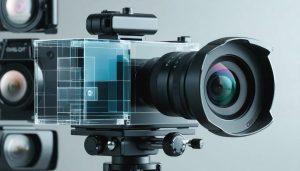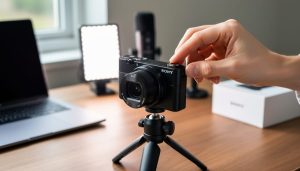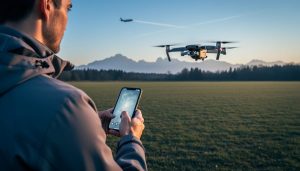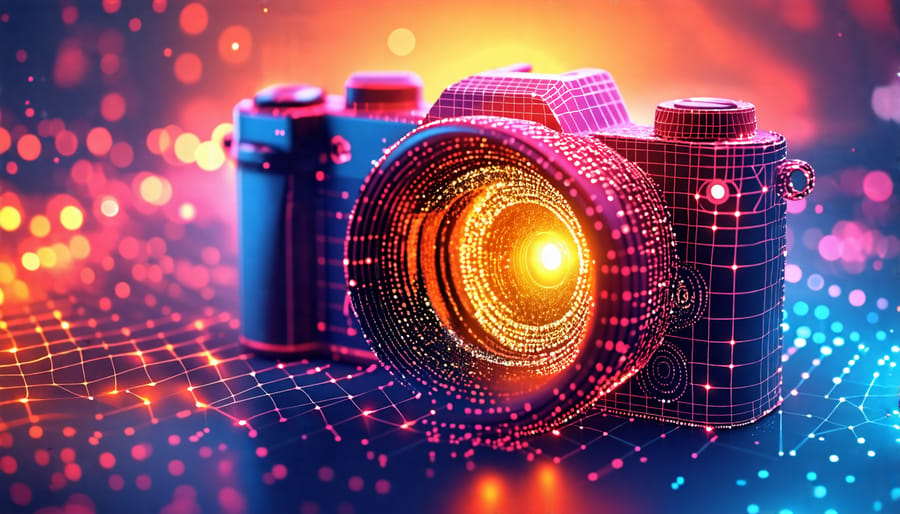
Explore different types of camera sensors by examining their impact on image quality, ensuring your photographic creations match your vision. Understand how sensor size affects the depth of field and low-light performance, crucial factors for both enthusiasts and professionals seeking to elevate their craft. Prioritize the megapixel count, which influences detail and cropping flexibility, and assess whether a Full Frame, APS-C, or Micro Four Thirds sensor best suits your needs. Adjust your camera settings to optimize the sensor’s capabilities, balancing ISO, shutter speed, and aperture for the best results.
What is a Camera Sensor?
The Anatomy of a Camera Sensor
At the heart of every digital camera lies the camera sensor—a sophisticated piece of technology responsible for capturing light and turning it into a digital image. Imagine the sensor as a mosaic of millions of tiny light-sensitive squares called pixels. When you press the shutter button, the camera’s lens focuses the light onto the sensor, where each pixel measures the amount of light hitting it. This is akin to collecting raindrops in a vast field of tiny cups, where each cup represents a pixel capturing an individual piece of the overall image.
Once the light is captured, it’s converted into electrical signals, with each pixel generating a signal based on the light intensity it detects. These signals are then processed to produce a digital image. The larger the sensor, the more pixels can fit, allowing for richer detail and better performance in low light. Think of it as having a bigger canvas to paint on, capturing more of the scene before you.
Understanding this essential process helps photographers select the right gear, as sensor size and pixel count can significantly influence image quality. Whether you’re shooting a sprawling landscape or a dimly lit room, knowing how your sensor works can elevate your photography game.
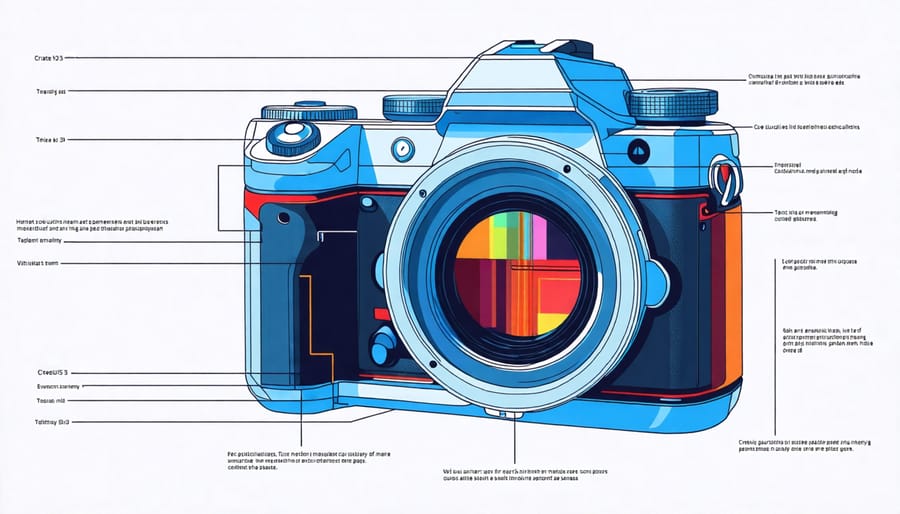
How Sensors Work
Imagine walking into a room and flipping a switch to illuminate every corner. A camera sensor performs a similar magic trick, except its job is to capture and convert light into a visual masterpiece. These sensors act as the heart of a digital camera, transmuting the light that enters through the camera lens into a digital signal. At their core, camera sensors are arrays of millions of tiny light-sensitive cells, each called a photosite or pixel. When light hits these photosites, it’s translated into electrical charges, which are then converted into a digital image.
To simplify, think of a camera sensor as a modern-day mosaic artist, piecing together myriad light data to create a vivid and detailed picture. The size and type of sensor can profoundly influence the quality of your images, affecting aspects like depth of field and low light performance. Understanding these basics can help you make informed choices about your gear and refine your photographic craft.
Types of Camera Sensors
CCD vs. CMOS Sensors
When it comes to choosing between CCD (Charge-Coupled Device) and CMOS (Complementary Metal-Oxide-Semiconductor) sensors, understanding their differences can help photographers make informed decisions. CCD sensors, once the industry standard, are known for producing high-quality, low-noise images, particularly in low-light conditions. Their uniformity in capturing light makes them a favorite for professional photography, where detail and clarity are paramount. However, they tend to consume more power and are generally more expensive to produce.
On the other hand, CMOS sensors are praised for their efficiency and cost-effectiveness. They allow for faster image processing and can integrate additional functions, like image processing or noise reduction, directly onto the chip. This makes them ideal for everyday photographers or hobbyists who need a more lightweight and versatile setup. While CMOS sensors have historically been criticized for noise issues, advancements in technology have significantly improved their performance, closing the gap with CCD in various aspects. Ultimately, the choice between CCD and CMOS will depend on your specific photography needs and budget.
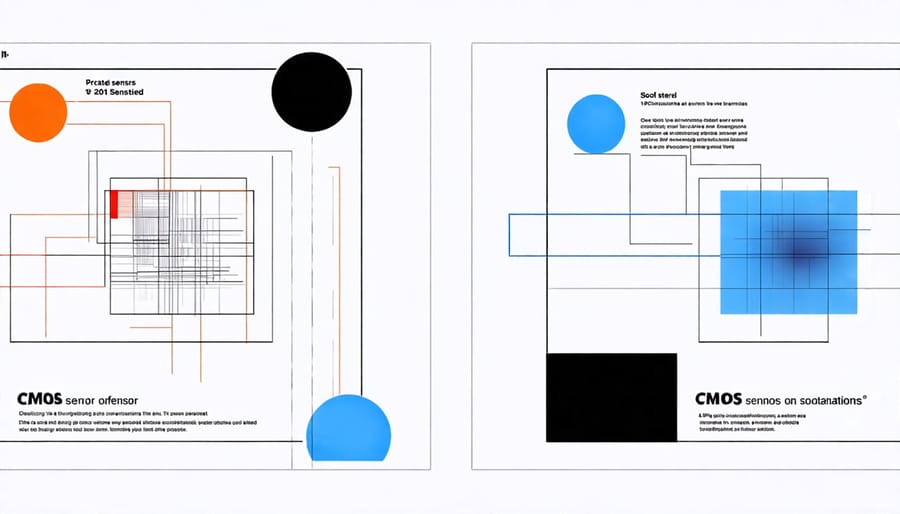
Full-Frame vs. Crop Sensors
When diving into the world of camera sensors, one of the most significant distinctions is between full-frame and crop sensors. Full-frame sensors are equivalent in size to a 35mm film frame, making them larger than their crop sensor counterparts. This size difference affects both image quality and creative possibilities. With a full-frame sensor, photographers benefit from superior low-light performance and a broader dynamic range, meaning you can capture more detail in shadows and highlights. It’s like having a broader canvas to paint on.
In contrast, crop sensors, often referred to as APS-C or micro four-thirds in some brands, are smaller and afford a more compact, lighter camera body. They’re great for travel photography due to the lighter gear, and the crop factor means your lenses achieve a longer effective focal length, handy for wildlife or sports photography.
Choosing between the two often boils down to your shooting needs and style. If you prioritize image quality and adaptability in various lighting conditions, a full-frame sensor might be your go-to. However, if portability and cost-efficiency are crucial, a crop sensor could be perfectly suited to your photographic journey.
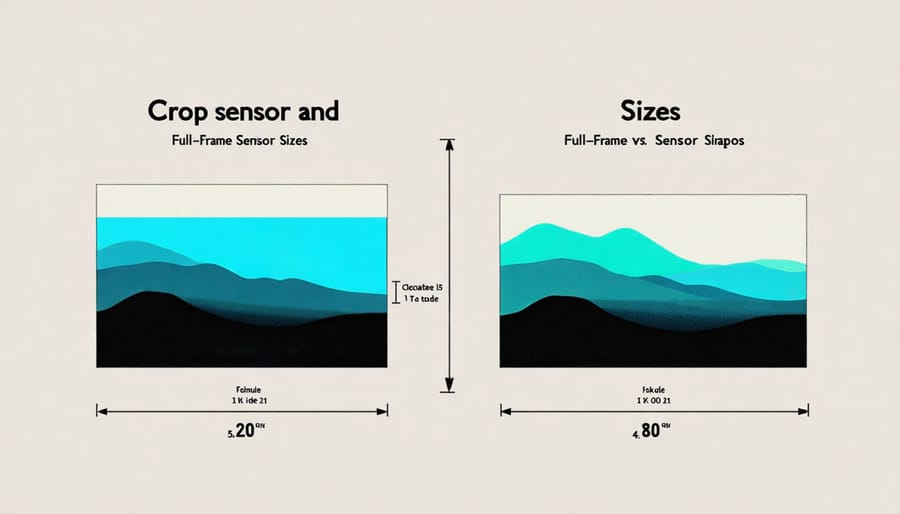
Specialty Sensors
In the realm of photography, specialty sensors offer unique qualities that cater to specific creative needs. Take the Foveon sensor, for example, which captures color in a more nuanced way. Unlike traditional sensors, Foveon layers pixels to absorb different colors at each depth, offering richer hues and sharper details — a real treat for photographers seeking true-to-life images. Meanwhile, the Micro Four Thirds sensor strikes a balance between quality and portability. Its smaller size benefits those who prioritize lightweight gear without significantly compromising image quality, making it a favorite for travel photographers. These sensors showcase how understanding their characteristics can greatly influence your photography journey.
Impact of Sensor Size on Image Quality
When it comes to photography, the size of your camera sensor plays a crucial role in determining image quality. Think of the sensor as the digital equivalent of film—it captures light and converts it into the digital image you see. Larger sensors typically gather more light, which can significantly enhance the clarity, detail, and overall quality of your images. This becomes particularly important in challenging lighting conditions, such as those encountered in night photography. For some helpful night photography tips, understanding your sensor’s capabilities can give your shots the extra edge.
Smaller sensors, commonly found in smartphones and compact cameras, might not handle shadows and highlights as well, which could lead to less detail and dynamic range. However, it’s essential to note that some smaller sensors in modern cameras have made incredible strides in quality, thanks to advances in technology. For professional photographers and enthusiasts, investing in a camera with a full-frame or APS-C sensor generally results in sharper, more detailed images with rich colors and better performance in low-light scenarios. In essence, the sensor size should align with your creative goals, whether you’re shooting landscapes or portraits, enabling you to make the most of your photographic endeavors.
Choosing the Right Sensor for Your Needs
Assessing Your Photography Style
Understanding your unique photography style is key to choosing the right camera sensor. Are you an enthusiast venturing into travel photography, capturing vast landscapes or street scenes? A larger full-frame sensor might be your go-to, offering rich detail and exceptional low-light performance. If you love action shots or wildlife, the crop sensor can provide the extra reach you need with telephoto lenses without sacrificing quality. For portrait enthusiasts, a medium-format sensor delivers the depth and sharpness that make images pop. By aligning your sensor choice with your style, you’ll ensure your gear maximizes creativity while supporting technical needs. Experiment and explore to find the perfect match, always asking how each sensor type can elevate your photographic vision.
Balancing Budget and Performance
When choosing a camera sensor, it’s essential to find the sweet spot between cost and performance. Start by identifying your photography needs. Are you shooting landscapes or capturing fast-paced action? Larger sensors, such as full-frame or APS-C, deliver superior image quality and low-light performance, ideal for professionals. However, they come with a heftier price tag. For hobbyists or those focused on travel, a micro four-thirds or compact sensor might suffice, offering affordability and portability.
Consider the real-world impact of resolution and dynamic range on your work. Higher megapixel counts allow for detailed images and cropping flexibility, but they soak up more storage and processing power. Explore models within your budget that balance these elements, ensuring your investment translates into better results rather than just technical specs.
Conclusion
In conclusion, understanding camera sensors is paramount for anyone passionate about photography, from eager hobbyists to seasoned professionals. These tiny technological marvels play a pivotal role in determining image quality, influencing everything from color depth to detail and dynamic range. As we explored, sensors come in various types and sizes, each offering unique advantages that cater to specific photographic needs and preferences. Full-frame sensors, for instance, are often favored by professionals for their superior performance in low light and their ability to produce stunningly detailed images. Meanwhile, crop sensors—compact and often more budget-friendly—are well-suited for enthusiasts and offer excellent versatility.
Selecting the right camera sensor involves a balance between understanding your personal shooting style and acknowledging the technical capabilities each sensor provides. It’s not just about choosing the most expensive option but about finding a sensor that complements your creative vision. Whether it’s capturing the grandeur of landscapes or the intricate details of fine art photography, the right sensor can significantly enhance your images. In the world of photography, where technology and artistry intertwine, an informed choice about your camera’s sensor can truly elevate your craft, allowing each shot to be a masterpiece of both skill and inspiration.


